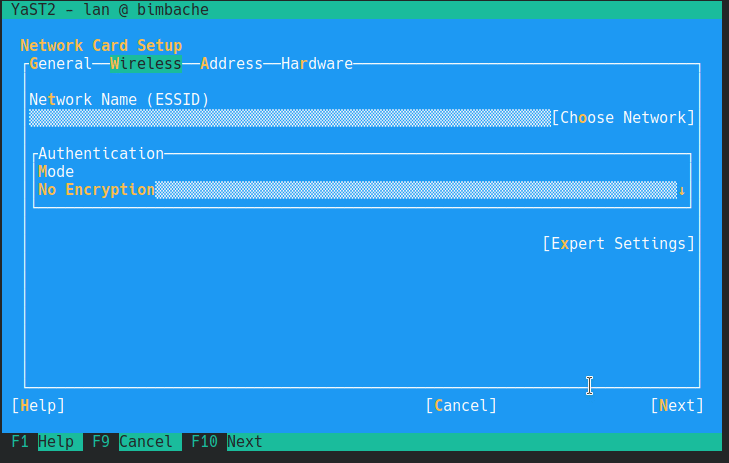It has been three weeks since the previous development report from the YaST Team. That’s one week more than our usual cadence, since most of the team was booked during four days in an internal SUSE workshop. But fear no more, we are back and loaded with news as usual. This time we bring:
- Support to enable and configure SELinux during installation
- A revamped interface for configuring wireless network devices
- Usability improvements in several areas
- A new “hidden level” in the installer with advanced tools ;-)
You may know that both the SUSE and openSUSE families of operating systems include container-oriented members, namely openSUSE MicroOS and SLE Micro. In order to make them even more awesome, we got the request to make possible to propose and configure the usage of Security-Enhanced Linux, more widely known as SELinux, during the (auto)installation. This is a complex change affecting several parts of YaST and various versions of (open)SUSE, but you can get a good overview in the description of this pull request which includes some screenshots that may be worth a thousand words. Right now, the feature may look different on each one of the distributions due to the different state of SELinux on them. While in SLE Micro the new setting is visible during installation and activated at its more restrictive level, in others it may look more permisive or even not be presented at all. We expect things to consolidate during the upcoming weeks.
And talking about things that take their time, for a long time we had wanted to improve the usability of the configuration of wireless network adapters. Finally we found the time to reorganize the corresponding tab in the YaST Network module, improving the mechanism to select a wireless network and automatically pre-filling as much information as possible. You can see the result in the following animation and in the detailed pull request with the usual before-and-after screenshots.
That’s not the only usability improvements we implemented during this sprint. Now the Partitioner offers more useful information about file-systems that need to be unmounted in advance and presents a more sensible initial state for the collapsable branches in its tables. YaST Network permits to tweak the virt bridge interface during manual installation and reports AutoYaST errors more nicely. Last but not least in the usability field, we improved how long texts are managed and presented in most YaST pop-up dialogs.
If you are still not impressed with all the new things this sprint brought, we can give you a sneak peak on something we have been preparing lately to give power-users more… er… power. ;-) As you all know, YaST is already a pretty advanced installer offering many options. And it’s very configurable so it can be tweaked to behave differently depending on the distribution, the product or the system role selected by the user. But believe it or not, we still face situations in which we would like to configure the installer even more during its execution to overcome some obstacle found in a very special scenario or just for debugging purposes. How do we plan to do it? Meet the new YaST installation console, available through the even newer installer configuration screen!
While we dive into the beta phase of openSUSE Leap 15.3 and SLE-15-SP3, the YaST Team will focus during the next weeks in fixing the bugs found by the testers of those upcoming distributions, which implies we cannot give you a fixed date for the next development report, but it will be for sure during March. Meanwhile, stay tuned and do not hesitate to report any significant bug you can find in YaST or in openSUSE in general. See you soon(ish)!
